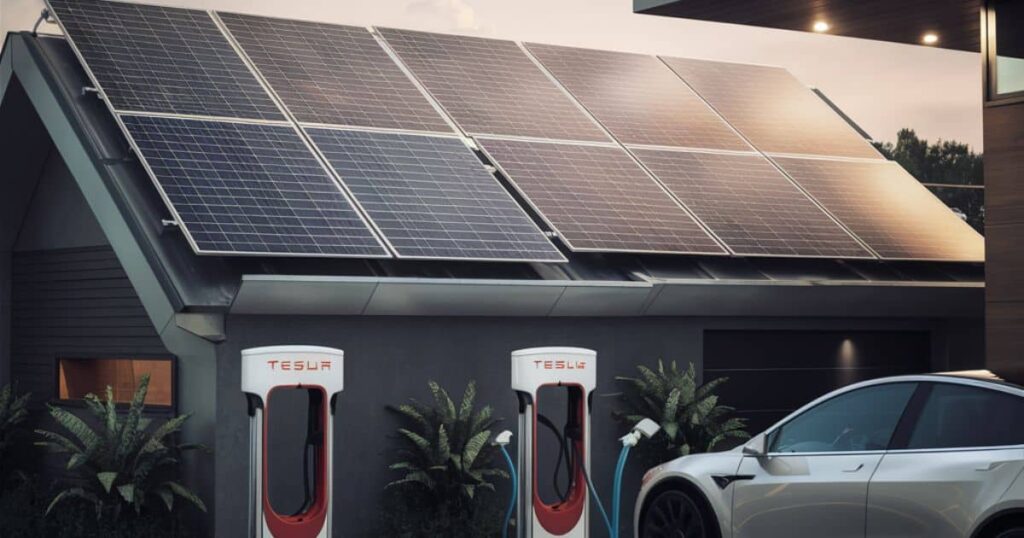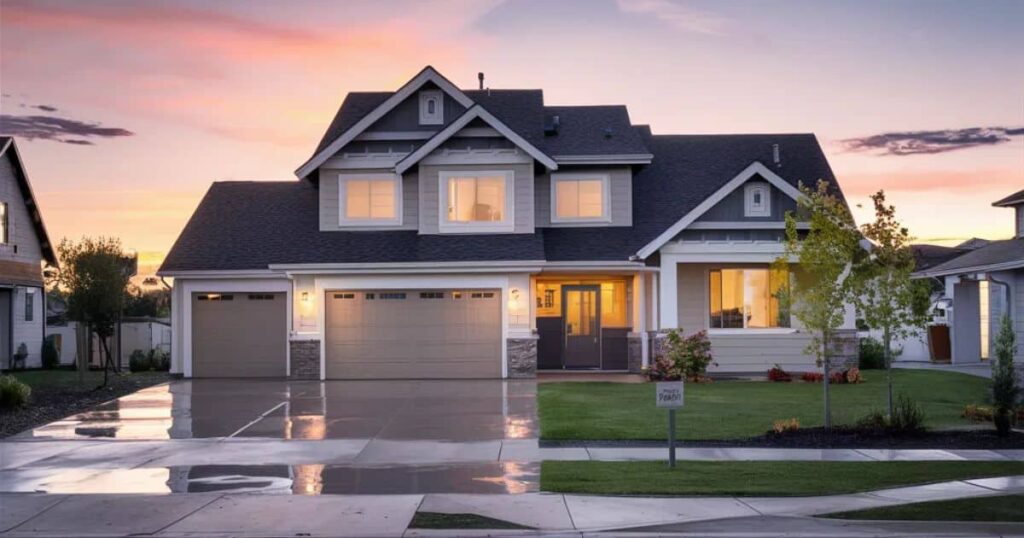The idea of owning a home designed and built by Tesla has sparked immense excitement and curiosity among tech enthusiasts and sustainable living advocates alike.
Elon Musk’s pioneering company has long been at the forefront of innovative technologies like electric vehicles and solar energy solutions.
But now, the prospect of Tesla venturing into the housing market with their sustainable and energy-efficient home designs has people eagerly awaiting details on when they can finally buy a Tesla Home.
As we approach June 2024, the anticipation continues to build around the potential release of Tesla’s first line of residential properties.
While Elon Musk and his team at Tesla have been relatively tight-lipped about specific launch dates and pricing, industry insiders and analysts have been piecing together clues that could hint at what’s to come.
What We Know So Far About Tesla’s Home Building Plans
Elon Musk’s vision for Tesla Homes is rooted in the company’s mission of accelerating the world’s transition to sustainable energy.
In various interviews and statements, he has expressed a desire to create affordable housing solutions that seamlessly integrate Tesla’s cutting-edge technologies, such as:
- Solar power systems with their iconic solar roof tiles
- Powerwall batteries for energy storage
- Advanced environmental control systems for optimal efficiency
In late 2022, Tesla took a significant step towards making this vision a reality by constructing a prototype tiny home on land owned by SpaceX in Texas.
This sleek and minimalist structure served as a proof-of-concept, showcasing how Tesla’s energy products could be integrated into a residential building.
While specific details about the prototype’s features were scarce, reports indicated that it was outfitted with a solar roof, backup battery storage, and other sustainable elements that could dramatically reduce or even eliminate the home’s reliance on traditional energy sources.
Signs That Tesla Homes May Be Coming Sooner Rather Than Later

As anticipation grows for the release of Tesla Homes, the company’s recent moves suggest that progress is being made behind the scenes. Here are some key developments that could signal a sooner-than-expected launch:
- Acquisitions in the Home Building Industry: In early 2023, Tesla acquired a prefabricated home construction company based in California. This strategic move could provide the necessary infrastructure and expertise to streamline the manufacturing process for their homes.
- Expansion of Gigafactory Facilities: Permits have been filed for the expansion of several Tesla Gigafactories, with speculation that a portion of the new facilities could be dedicated to home production lines.
- Job Listings Related to Home Building: Over the past year, Tesla has been actively hiring for positions such as “Home Design Specialist,” “Residential Construction Manager,” and “Home Energy Integration Engineer,” signaling their growing focus on the housing market.
What Could Be Holding Tesla Homes Back?
While the signs are promising, there are also potential hurdles that could delay the widespread availability of Tesla Homes:
- Supply Chain Challenges: Like many industries, the home building sector has faced significant supply chain disruptions, particularly for raw materials and specialized components. Securing a steady supply of these resources could impact Tesla’s production timelines.
- Scaling Up Manufacturing: Transitioning from a prototype to mass-producing homes at scale is a massive undertaking. Tesla may need more time to fine-tune their manufacturing processes and ensure consistent quality across their home designs.
- Regulatory Approvals: Depending on local building codes and regulations, Tesla may need to navigate a complex web of approvals and certifications before their homes can be sold in different markets across the United States.
What a Tesla Home Could Look Like and Include
While official details are still under wraps, we can speculate about the potential features and design elements of a Tesla Home based on the company’s existing product lineup and the prototype glimpses we’ve seen so far.
Additionally, a VIRTUAL TOUR OF JOYCE MEYER’S MAGNIFICENT HOUSE could provide further inspiration for the luxurious and innovative elements that might be incorporated.
Design and Aesthetics:
- Sleek, minimalist exteriors with a modern industrial flair
- Open-concept layouts optimized for natural lighting and efficient use of space
- Sustainable and durable construction materials, potentially including reclaimed or recycled components
Energy Systems:
- Seamlessly integrated solar roof tiles for renewable energy generation
- Powerwall batteries for energy storage and backup power
- Advanced environmental control systems for optimal temperature regulation and air quality
Smart Home Integration:
- Intuitive control systems for monitoring and adjusting energy usage, climate, and other home functions
- Compatibility with other Tesla products like electric vehicles and home charging stations
- Potential for future integration with AI assistants or home automation features
Customization Options:
- Modular designs that allow for varying square footage and layout configurations
- Sustainable material choices for finishes, appliances, and fixtures
- Potential to customize energy system sizes based on household needs
Estimated Pricing: While Tesla has not provided official pricing details, industry analysts speculate that their homes could potentially fall within the following ranges:
- Tiny Home Models: $50,000 – $100,000
- Standard Single-Family Homes: $200,000 – $500,000
- Luxury/Custom Homes: $500,000 and above
These price points could position Tesla Homes as a more affordable option compared to traditional home builds, especially when factoring in the long-term energy savings and reduced utility costs.
Why Buy a Tesla Home Over Traditional Options?
The appeal of owning a Tesla Home goes beyond just the cutting-edge technology and sleek design aesthetics. Here are some potential advantages that could sway homebuyers:
- Lower Energy Bills: With integrated solar power generation and energy storage systems, Tesla Homes could significantly reduce or even eliminate traditional electricity costs.
- Environmental Benefits: By leveraging sustainable materials and renewable energy sources, these homes would have a much lower carbon footprint compared to traditionally built properties.
- Smart Home Convenience: The seamless integration of Tesla’s intelligent home systems could provide a level of automated convenience and control that is unmatched in most current home offerings.
- Potential for Energy Independence: With the right combination of solar panels and battery storage, Tesla Homes could potentially operate entirely off-grid, providing energy independence and resilience against power outages.
- Reduced Maintenance Costs: The durable construction materials and efficient energy systems in Tesla Homes could translate to lower long-term maintenance and repair expenses.
Other Companies Offering Tesla Home Alternatives Today

While the world eagerly awaits the official launch of Tesla Homes, there are already several companies offering sustainable and energy-efficient home solutions that could serve as alternatives for those unwilling to wait.
One such company that has gained popularity is Gator Rated, which has partnered with a tiny home builder to offer fully customizable and eco-friendly tiny homes starting at $19,900. By using the referral code “115”, customers can access the best pricing on these compact yet feature-packed dwellings.
Another notable player in the sustainable housing market is Craftsman Tiny Homes, which specializes in creating tiny homes ranging from $10,000 to $15,000. While not as advanced as what Tesla may offer, these homes could provide a more affordable entry point into eco-conscious living.
Additionally, companies like Plant Prefab and Blu Homes have been pioneers in the prefabricated home industry, offering customizable designs with a focus on sustainability, energy efficiency, and modern aesthetics.
While these alternatives may not match the full suite of features and technologies expected from Tesla Homes, they could serve as a viable option for those seeking a more sustainable living solution without the potential wait times or premium pricing of a Tesla-branded home.
Conclusion
As the world inches closer to June 2024, anticipation surrounding Tesla Homes continues to build. While Elon Musk and his team have remained tight-lipped about specifics, strategic moves and job listings suggest progress behind the scenes.
The allure of owning a Tesla Home, with its seamless integration of solar power, energy storage, and smart home technologies, is undeniable. However, potential roadblocks such as supply chain challenges, scaling up manufacturing, and regulatory approvals could delay widespread availability.
In the meantime, companies like Gator Rated, Craftsman Tiny Homes, Plant Prefab, and Blu Homes offer sustainable home solutions for those unwilling to wait. The future of sustainable and energy-efficient housing has captured the imagination of homebuyers and eco-conscious consumers alike.
Case Study: The Tesla Tiny House Village in Australia
To give a glimpse of what a Tesla-powered community could look like, we can look to the example of the Tesla Tiny House Village currently touring across Australia.
This innovative housing project features a collection of tiny homes, each outfitted with the latest Tesla technologies, including:
- Solar Roof Tiles: Generating clean, renewable energy from the sun’s rays.
- Powerwall Batteries: Storing excess solar energy for use at night or during grid outages.
- Electric Vehicle Charging Stations: Allowing residents to charge their Tesla electric cars using the village’s solar-powered infrastructure.
The village serves as a living demonstration of how Tesla’s suite of sustainable products can be seamlessly integrated into a residential setting, providing energy independence and significantly reducing the community’s reliance on traditional power sources.
According to the project’s organizers, the tiny homes in the village consume up to 90% less energy than a conventional house of the same size, thanks to their efficient design and Tesla’s cutting-edge technologies.
Quotes from Industry Experts:
“Tesla has the potential to disrupt the housing industry in the same way they revolutionized the automotive sector with their electric vehicles. Their focus on sustainable living and energy efficiency could make homeownership more affordable and eco-friendly for millions of people.” – Sarah Williams, Housing Market Analyst at Forbes
“The integration of solar power, battery storage, and smart home systems is the future of residential construction. Tesla is well-positioned to lead this charge, leveraging their expertise in renewable energy technologies.” – Dr. Robert Stevenson, Professor of Sustainable Architecture at MIT
As the world eagerly awaits the official release of Tesla Homes, the Tiny House Village in Australia serves as a tantalizing preview of what could be in store. It’s a testament to Tesla’s commitment to sustainable living and their ability to seamlessly blend cutting-edge technologies into residential settings.
Tables and Data
To further illustrate the potential impact of Tesla Homes on energy consumption and costs, let’s compare some hypothetical scenarios:
| Home Type | Average Annual Electricity Cost | Estimated Solar Generation | Net Energy Cost |
| Traditional Home (No Solar) | $2,000 | 0 kWh | $2,000 |
| Home with Standard Solar System (5kW) | $2,000 | 7,500 kWh | $500 |
| Tesla Home with Solar Roof (10kW) | $2,000 | 15,000 kWh | $0 (Net Zero) |
Assumptions: Average household electricity consumption of 12,000 kWh/year, $0.15/kWh electricity rate, and optimal solar conditions.
As the table shows, a Tesla Home equipped with a larger solar roof system and energy storage capabilities could potentially achieve net-zero energy costs, eliminating traditional electricity bills altogether.
Additionally, research by the National Renewable Energy Laboratory suggests that homes with solar panels can increase property values by an average of 4.1%, further adding to the long-term financial benefits of owning a Tesla Home.
With the promise of lower energy costs, increased property values, and a reduced environmental impact, it’s no wonder that the anticipation for Tesla Homes continues to build as we approach June 2024.
While the wait may be challenging for some, the potential rewards could be well worth it for those seeking a sustainable and energy-efficient living solution from one of the world’s most innovative companies.







